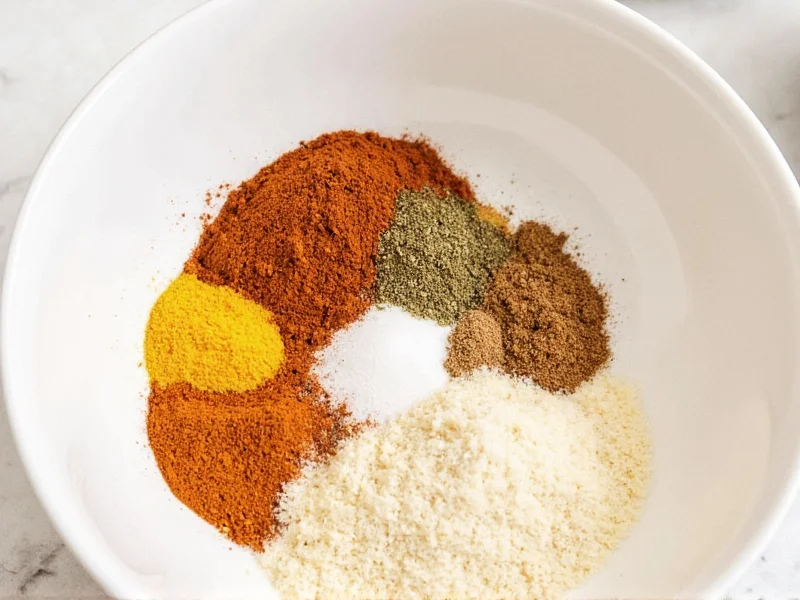The best spices for chicken noodle soup include black pepper, thyme, bay leaves, parsley, garlic powder, onion powder, and a pinch of turmeric. For depth, add rosemary or sage sparingly. Red pepper flakes provide subtle heat. Proper measurements and timing are crucial—add dried herbs early, fresh herbs at the end.
Chicken noodle soup is comfort food perfection, but the right spices transform it from basic to extraordinary. Many home cooks rely on salt alone, missing opportunities to build complex, satisfying flavors. This guide reveals precisely which spices elevate chicken noodle soup, why they work, and exactly how to use them for restaurant-quality results every time.
Why Spices Matter in Chicken Noodle Soup
While chicken noodle soup seems simple, its magic lies in layered flavors. The broth forms the foundation, but spices activate and enhance natural umami notes. Proper seasoning balances saltiness, adds aromatic complexity, and creates depth that makes each spoonful satisfying. Unlike bold stews, chicken noodle soup requires subtle spice integration—enhancing without overpowering the delicate chicken and vegetable flavors.
Essential Spices for Classic Chicken Noodle Soup
These foundational spices create the traditional flavor profile everyone recognizes. Use them as your baseline before experimenting:
| Spice | Measurement (per 8 cups broth) | When to Add | Flavor Contribution |
|---|---|---|---|
| Freshly ground black pepper | 1/2 teaspoon | Early in cooking | Warmth, subtle heat, balances saltiness |
| Dried thyme | 1/2 teaspoon | Early in cooking | Earthy, floral notes that complement chicken |
| Bay leaves | 1-2 leaves | Early in cooking (remove before serving) | Woodsy depth, enhances broth complexity |
| Fresh parsley | 2 tablespoons chopped | Just before serving | Bright, clean finish that cuts richness |
| Garlic powder | 1/4 teaspoon | With onions and celery | Subtle savory backbone without raw garlic bite |
Creative Spice Variations for Elevated Flavor
Once you've mastered the classic profile, these additions create distinctive variations while maintaining soup integrity:
- Rosemary (1/4 teaspoon dried) - Adds piney sophistication; use sparingly as it can dominate
- Sage (1/8 teaspoon dried) - Complements poultry beautifully; pairs well with lemon zest
- Turmeric (1/8 teaspoon) - Provides golden color and subtle earthiness without curry flavor
- Red pepper flakes (1/16 teaspoon) - Creates gentle warmth that builds with each spoonful
- Lemon zest (1 teaspoon) - Brightens heavy broths; add with fresh herbs at the end
Spice Combinations That Work Harmoniously
Certain spices amplify each other's best qualities. These pairings create balanced flavor profiles:
Mediterranean Twist
Combine 1/2 teaspoon dried oregano, 1/4 teaspoon dried basil, and 1/8 teaspoon red pepper flakes with your base spices. Finish with lemon zest and fresh dill. This variation works particularly well with added white beans.
Herbes de Provence Blend
Use 3/4 teaspoon herbes de Provence (a pre-mixed blend of thyme, rosemary, oregano, marjoram, and lavender) instead of individual dried herbs. The lavender adds a subtle floral note that elevates traditional chicken soup.
Asian-Inspired Variation
Replace bay leaves with one 2-inch piece of fresh ginger (sliced). Add 1 star anise and 1/4 teaspoon toasted sesame oil at the end. Swap parsley for cilantro. This creates a fusion soup that maintains chicken noodle soul while offering new dimensions.
Practical Spice Usage Guide
Even the best spices fail with improper application. Follow these professional techniques:
Timing Matters Most
Dried herbs need time to rehydrate and release flavors—add them when sautéing onions and celery. Fresh herbs lose volatile oils when boiled—stir them in during the last 5 minutes. Whole spices like bay leaves require simmering to infuse properly but should be removed before serving.
Measurement Precision
Chicken noodle soup has a narrow flavor window. Exceed these proportions at your peril:
- Strong herbs (rosemary, sage): Never more than 1/4 teaspoon per 8 cups broth
- Spicy elements (red pepper flakes): Start with 1/16 teaspoon, add more after tasting
- Dried herbs: Maximum 1 teaspoon total per 8 cups broth
Taste and Adjust Method
Season in stages: Add half your planned spices early, then adjust after 20 minutes of simmering. The broth concentrates as it reduces, so final seasoning should happen just before adding noodles. Remember—underseasoned soup can be fixed, but overseasoned soup cannot.
Common Spice Mistakes to Avoid
Even experienced cooks make these errors that ruin otherwise good soup:
- Using old spices - Ground spices lose potency after 6 months. Test by rubbing between fingers—if aroma is weak, replace
- Adding all spices at once - Different spices require different infusion times for optimal flavor release
- Overlooking acid balance - A splash of apple cider vinegar (1/2 teaspoon) brightens heavy broths; add with final seasoning
- Mixing incompatible profiles - Avoid combining strong Mediterranean and Asian spices in one batch
- Using pre-mixed "soup blends" - These often contain excessive salt and inconsistent spice ratios
Building Your Chicken Noodle Soup Spice Kit
Keep these essentials stocked for perfect soup anytime:
- Freshly ground black pepper (never pre-ground)
- Dried thyme (better shelf life than fresh for this application)
- Bay leaves (dried maintain quality for years)
- Garlic powder (more consistent than fresh for broth)
- Small container of high-quality turmeric
Store spices in airtight containers away from light and heat. Test potency by rubbing a small amount between your fingers—if the aroma is faint, replace them. Properly stored, dried spices maintain quality for 6-12 months.











 浙公网安备
33010002000092号
浙公网安备
33010002000092号 浙B2-20120091-4
浙B2-20120091-4